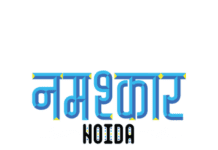“Hi.” “ello” Orange soda, say boom-ba. “uncle-ba
Do you remember how fun it was to hear your voice bounce around in a big room and then return to you when you were a kid? Whether it is faded memories or you still do when no one is around – let me show you how to inject the fun into your poetry. The first few are some poetic and literary terms, and the last section will be a poetry form.
Poetry and music have a close relationship, so it should not surprise you when I tell you that a poetic echo has to do with “the music” or the sound of a poem, specifically in terms of rhyme types.
Generally in literary terms, an echo is a “repetition of the same sound or combination of sounds, fairly close to each other, so that they ‘repeat’ each other [, and are a] common device in verse to reinforce meaning and structure, and also to to give melody and melody ”(Cuddon and Preston 247).
Alliteration, the repetition of beginning sounds, is probably the best known, but there are also vocal and consonant echoes whose repetitions are subtle.
Vocal echo repeats are “vocal sounds [that] are repeated, but not necessarily in sequence (cotillion / billygoat)” (Miller 14). If you look at Miller’s example, you can see that he used the long “o” and short “in” sounds on the cotillion. In car lygoat, the sounds are repeated, but not in the same order. If they had been in the same order, it would still be considered a vocal echo.
In contrast, consonant echoes have repeated consonant sounds, “but not as in alliteration, in the same order (tell / late, fall, traffic)” (Miller 14). When you look at Miller’s consonantal example, you see the sounds “t” and “l” from the word “tell” repeated, but in the reverse order of the word “late”. Unlike a vocal echo, if you choose not to reverse their order, it will still not be called a consonant echo. It would be alliteration or a type of rhyme, depending on where the repetition took place within the word and within the sentence.
My favorite form of Echo I call a literary echo. I use this technique when writing my essays, poetry, short stories or articles. Instead of repeating a sound, as in the above or in the echoes below, you repeat a topic or topic. Let me give you an example. I wrote a semester post a couple of years ago, and in my opening paragraph, I compared presidential candidates to apples and oranges (from the proverbs). As I closed my essay, I repeated this with a slight twist and referred to it all as a fruit salad. This reminded the reader of where I started and helped me wrap the essay.
When we talk about oranges, another example of Writer Digest poetry winner a couple of years ago using this technique, and strangely enough, the subject of the echo they used is an orange. They began with a brief sentence about the rhythm of citrus fruit and then went into the heart of their poem, which was not at all about oranges. Eventually, they wrapped it up by referring back to the orange.
This can be done in any form of prose or poetry. In poetry and other short works, it can easily be used as a foil to the true subject of the poem and allows you to add depth to your work.








